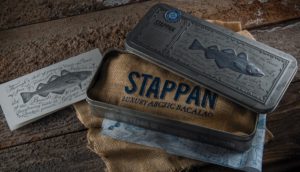#28.01.2019 Steel – packaging designed for the 21st century
By Alexis Van Maercke
Steel has been used as a packaging material for over 200 years, but its versatility and potential for design will ensure it continues to be used for generations to come.
While environmental impact, flavour retention and preservation qualities are all issues which affect consumer packaging choices, producers and brands are also swayed by the opportunity for eye-catching design.
choices, producers and brands are also swayed by the opportunity for eye-catching design.
Thanks to its unrivalled strength, total barrier properties and shelf life offering, steel as a packaging material was once merely a practical choice. Today, in an increasingly competitive market, steel’s features facilitate brand differentiation and shelf impact, offering endless possibilities for premium primary and secondary packaging to suit many different markets.
Cans allow for digital surface printing or individual labelling, which means that small printing volumes – such as for seasonal and local campaigns – are possible. Such flexibility is not available for those packaging options restricted to pre-printed materials, for which lead times can reach up to 16 weeks and there is a risk of leftover material for low-running prints or after relaunches 1.
Additionally, only metals offer the scope for moulding, embossing, micro-embossing, debossing, printing, tactility, matt finishes, and pre-distortion printing for shaped cans, as well as full-colour printing and special decorative effects including ‘glow in the dark’ and metallic finishes.
A great example of this in action can be seen in the design of the Stappan Luxury Arctic Bacalao tin.
Creative agency Contagious was briefed by North Export to produce new packaging for its luxury salted cod, and strength was just one of qualities stipulated. Designing a premium package with real shelf stand out was equally important.
Popular across Europe, individual tins of Stappan Luxury Arctic Bacalao enjoy a premium positioning and Contagious needed to design something which communicated the rich heritage of the brand whilst ensuring the contents always arrived at their destination in perfect condition.
Steel was quickly identified as the ideal packaging material. Not only did the weight and strength of steel complement the premium nature of the product, Contagious were able to make use of techniques such as embossing and debossing to add large amounts of fine detail to the tin.
But innovation in the industry is not restricted to design. Steel packaging is also becoming lighter, making it ever more environmentally-friendly and offering greater consumer convenience.
At the Aerosol and Dispensing Forum in Paris earlier this year, Colep demonstrated how recent trends in light-weighting mean steel aerosols can now be 22% lighter than previous generations of cans. Ardagh Group achieved a wall thickness of only 0.13mm for its 250ml Schwarzkopf Drei Wetter Taft aerosol can. This dimension allows for a 15% saving in materials and water.
Steel continues to provide opportunities for all sorts of brands to make their mark on the shelf. It is formable and incredibly versatile, and because a range of innovative printing, finishing and shaping techniques have been developed, the possibilities are endless when it comes to design.
This, combined with the benefits it offers in terms of sustainability, secures steel as the packaging material of choice for the future.
- Source Tilisco GmbH, 2018
